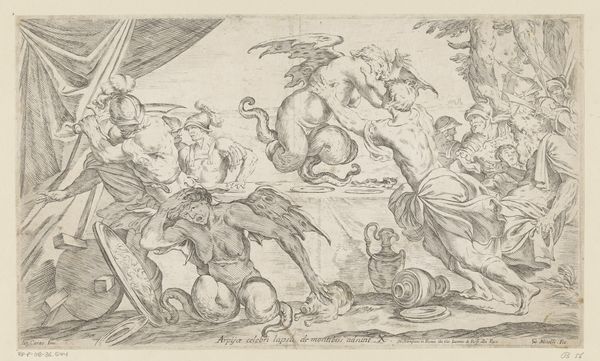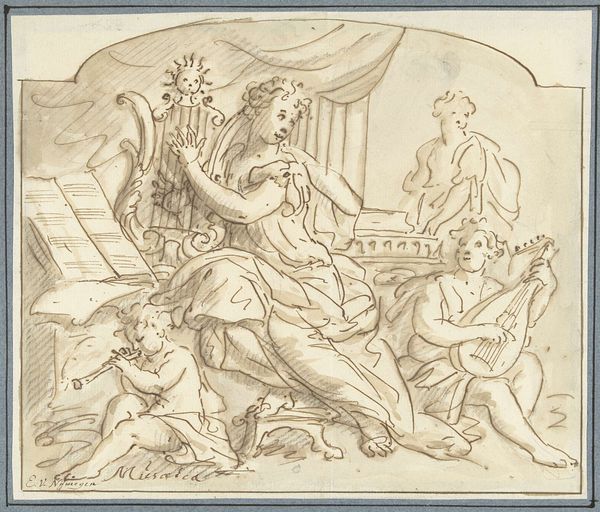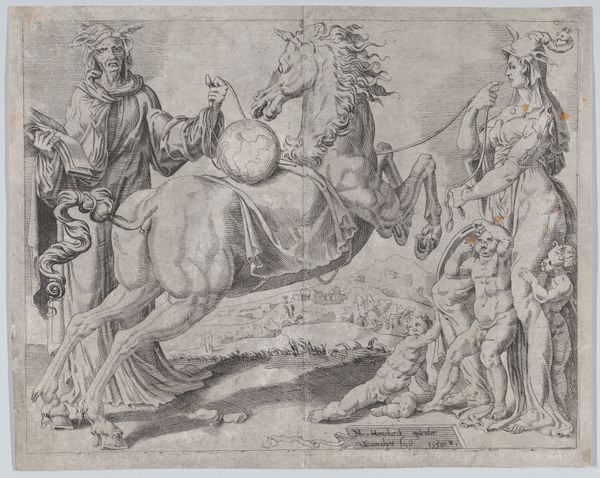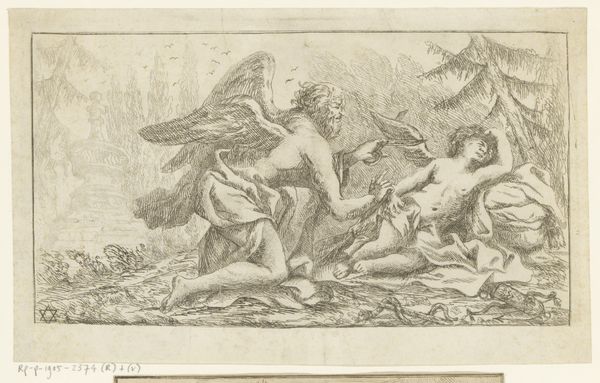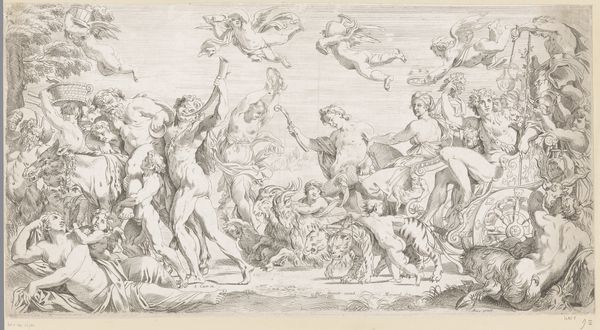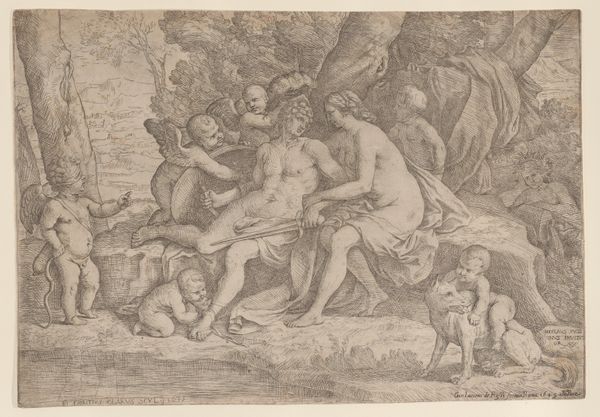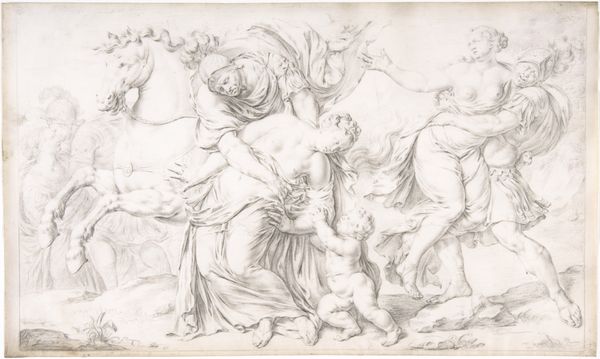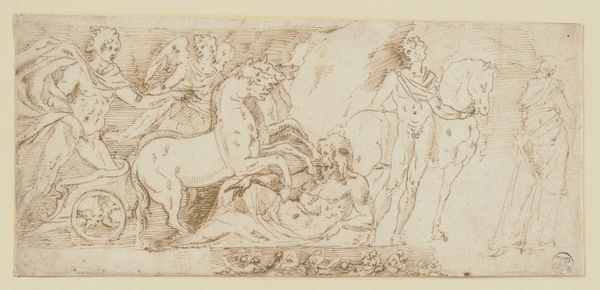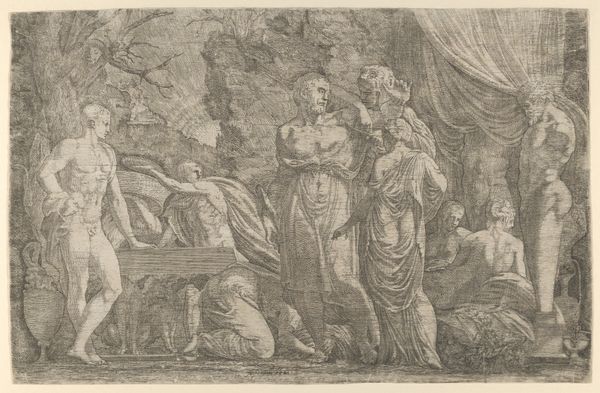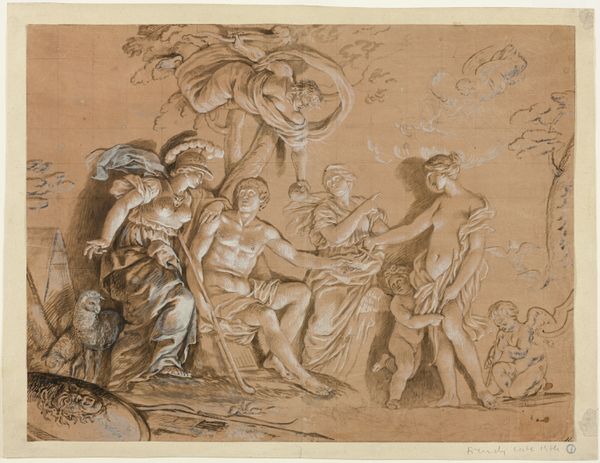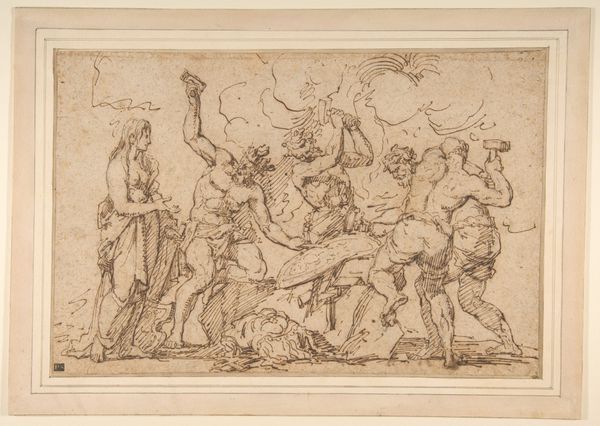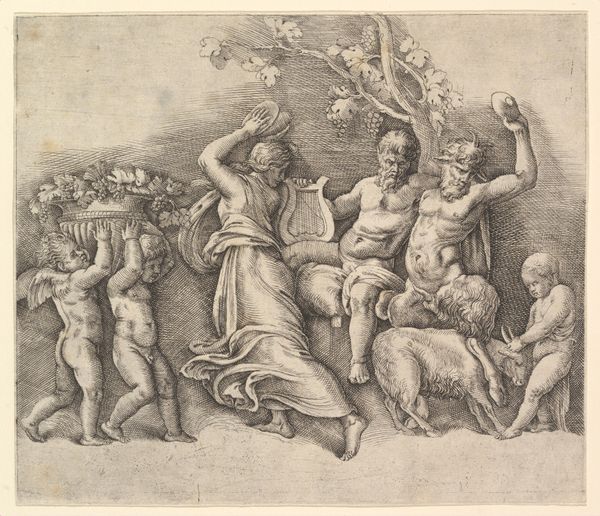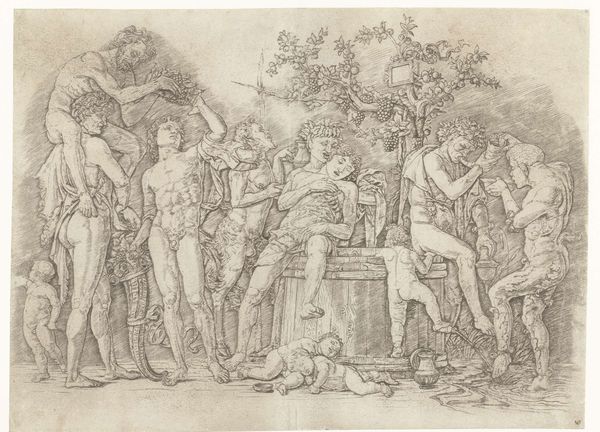
drawing
#
drawing
#
landscape
#
figuration
#
ancient-mediterranean
Dimensions: 177 mm (height) x 205 mm (width) (bladmaal)
Editor: This drawing, "Persephone and Dionysus," from the 16th century, is an anonymous piece rendered in pencil. The figures are gracefully composed, but I'm drawn to the peculiar presence of wheat stalks throughout. What strikes you about this piece? Curator: Notice how the wheat connects each figure materially. The composition guides us from the basket Persephone sits on, up through the bundle behind Dionysus, and finally, to the child wielding the sickle. This act of harvest isn't merely symbolic; it reflects a real process, real labor invested in turning the earth's resources into sustenance. How does this production tie into their deified status? Editor: I suppose it's because they control fertility and abundance? Curator: Exactly! And where does wealth and power originate, especially in the 16th century? Largely from land and agriculture. This drawing subtly acknowledges that their status is intrinsically linked to this material reality, to the labor required to feed a population and generate surplus. Who benefitted most from these agrarian activities in the 16th century? Editor: So, while they’re presented as gods, their power stems from very earthly activities and social structures of the time? Curator: Precisely. Even depictions of mythology can offer a lens into understanding historical systems of labor, materiality, and ultimately, consumption. The divine, in this case, is built on very real, material foundations. Editor: I see it now. Focusing on the material gives us a new appreciation for the socio-economic context, it's fascinating. Thanks!
Comments
No comments
Be the first to comment and join the conversation on the ultimate creative platform.
